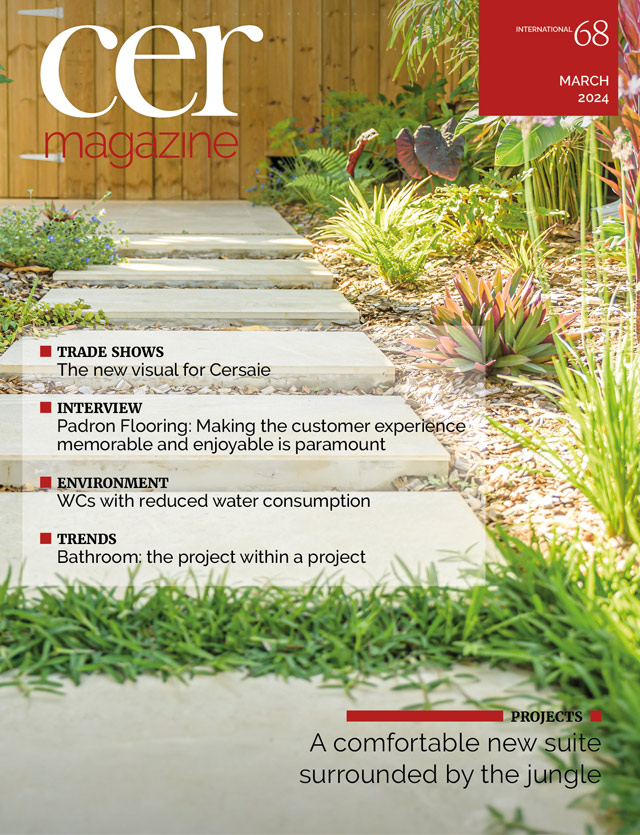The eight forms of sustainability of Italian ceramic tiles
(March 2024) | Italian ceramic tiles are renowned for their sustainability, but it can sometimes be difficult to recall all the various aspects that this entails. Following decades of research and investment, the sector now meets global Best Available Techniques (BATs) and boasts emission levels well below legal requirements. As a result, the industry represents a model of environmental and social excellence that merits further examination.
Sustainability in the Italian ceramic tile sector begins well before the production stage itself. For decades, the industry has eliminated all toxic and harmful raw materials that may pose a risk to workers’ health, obtaining a totally inert finished product fired at a temperature of 1200°C. This commitment to the sustainability of materials goes hand-in-hand with a broader dedication to manufacturing sustainability, achieved through the adoption of cutting-edge technologies and safe, well-designed workplaces. In accordance with the principle of “ecology = economy”, the adoption of Ceramic Factory 4.0 technologies makes it possible to optimise energy usage, maximise the recycling of waste and minimise the global environmental footprint of the production process. Another important aspect is photovoltaic sustainability, as increasing numbers of ceramic companies install electricity self-generation systems on their factory roofs. This trend really took off during the energy crisis of 2022, resulting in the installation of 58 photovoltaic systems with an annual capacity of 72 million kWh by the end of 2023, with further growth anticipated.
Ceramic factories produce a material that meets the highest product sustainability standards. Ceramic is known for its durability and resistance to fire, frost, water and weathering. It is an easy-to-clean material that retains its properties over time. Its lifespan is often as long as that of the building itself, reducing the need for replacement products and the associated consumption of raw materials and energy. Additionally, the sustainability of floor tiling is enhanced by the use of adhesives and grouts that fully comply with environmental standards and protocols, contributing to overall sustainability of use. The adoption of ceramic tiles and slabs for exterior façades can reduce the amount of energy needed for heating and air conditioning by as much as 35%. Thanks to the conductivity of ceramic materials, radiant floors can heat interiors using water at a temperature of less than 30°C, significantly lower than the 70°C required by conventional radiators. All of these factors enable Italian ceramic tiles to contribute to the sustainability of living quality, promoting well-being and comfort and preventing the occurrence of sick building syndrome in residential, work, cultural, entertainment, hospitality and catering spaces.
Originating from the earth, Italian ceramic tiles come full circle with end-of-life sustainability, as they can be fully reused either as a secondary raw material in construction or as a road subbase material. This enables them to play an important role in the circular economy after contributing to sustainability throughout every stage of their lifecycle.





